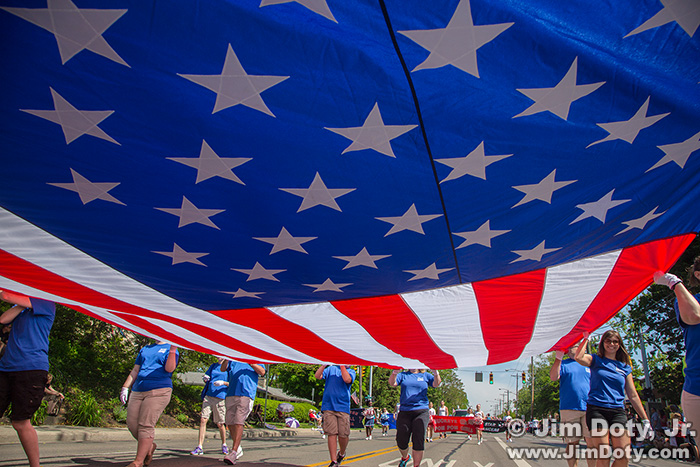If you are going to photograph a parade, sometimes the best point of view is from the middle of the street and close to the ground. It also helps if you spent several years doing photography for a newspaper. Equipment is important too.
Be active, move around, and try different angles of view. Many years ago I was new at shooting for a small town newspaper and nearby there was an experienced photographer from a big city newspaper. It was an education watching him work. He was always on the go. Up on the curb, sitting down the the middle of the street, running down the street to re-shoot someone or something with a different different point of view than when they first passed him. Walking down the side of the street while paralleling the car with the parade princess so he could get several shots. Picking different areas up and down the street so he would have different backgrounds in his photos. Grabbing interesting photos of the people watching the parade.
When I cover a parade I have two cameras and two lenses ready to go. One DSLR camera body with a wide angle to normal lens (usually 24-105mm) is hanging around my neck. The other DSLR camera body with a long lens (usually 100-300 or 100-400 mm) is hanging off my right shoulder. In a fast moving event you don’t always have time to change lenses so it is best to have two cameras with lenses ready to go at all times.
The camera with the wide angle to normal lens has a full frame digital sensor so my wide angle focal lengths still have a wide angle field of view. The camera with the long lens has a smaller sensor with a 1.6x field of view (FOV) of crop. This in effect gives my long lenses a 60% percent longer focal length. Read more about full frame and cropped sensors with a field of view crop in this article.
Keep an eye on how much space you have left on the memory card in each camera. If you are down to space for 20-30 photos on a card, choose a lull in the parade and change memory cards as soon as possible. You don’t want to miss out on your favorite photo of the day because you ran out of space on a card.
In a small backpack or camera vest I also have a 15mm and 17-40mm lens for when I want to go really wide, and a flash.
I often have a Canon SX280 HS point-and-shoot camera in a small pouch on my belt. It has a 24-500mm lens (35mm equivalent). If you don’t have a second camera body so you can have two lenses ready to go at all times, one of the super zoom, point-and-shoot cameras can make a good backup.
Photo Data:  Canon 5D Mark III. Canon EF24-105mm f/4L IS USM lens at 24 mm. 1/800 sec, f/8, ISO 400.

